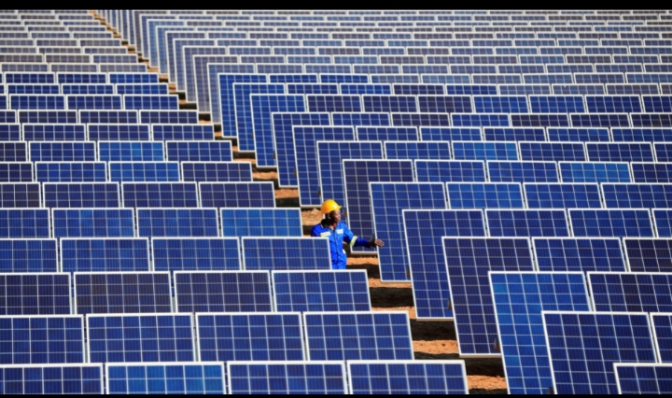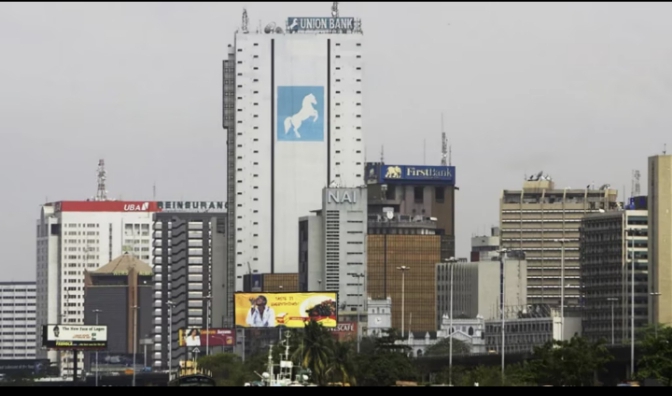Emerging from the COP27 holding in Egypt, the International Renewable Agency (IRENA), on Tuesday, said it would pump $1billion into a new effort that would electrify health facilities, along with food storage and agriculture, with solar power, while the World Bank said it also plans to triple its investments in solar electrification efforts to reach 100,000 health facilities by 2030.
According to IRENA´s Director General, Francesco La Camera, the initiative aims
to tackle the gaps in health care that leave an estimated one billion people around the world reliant on healthcare facilities with either no electricity or an unreliable supply.
La Camera was speaking at a high level event, “Energizing health: accelerating electricity access in health-care facilities,” organized by the World Health Organization at its COP27 Health Pavilion.
He further said that his agency is assessing the energy gaps in healthcare systems in a number of the poorest sub-Saharan African countries, beginning with Burkina Faso, Malawi and Mali in order to get a better idea of the gaps in energy access, and how they impede health service delivery.
In this direction, a 2013 WHO-sponsored study of 11 sub-Saharan African countries found that 26% of health facilities had no electricity at all, and only 28% of facilities, on average, had reliable electricity access. Even at hospital level, only 34% of hospitals had reliable electricity. Traditionally, the fallback power option for the health sector in areas with poor grid access has been diesel generators, which are not only highly polluting but costly, with fuel expense and breakdowns leaving a large proportion idle.
It was pointed out that, during the pandemic, there was a major push to add solar powered refrigeration capacity to African health centers to roll out COVID vaccines, which require a reliable cold chain. But there remains a lack of systematic investment, along with comprehensive data on gaps and needs on the ground.
READ MORE: AfDB Draws $63.8 Billion Worth of Investment Interest in 2022
It was further revealed that, even with the limited data available, however, it´s apparent that the lack of electricity and impacts on healthcare are particularly severe in Africa.
This was largely agreed to by panelists at the event, which included representatives from the World Bank, WHO´s office in Somalia and a leading Indian solar entrepreneur.
Accordingly, their discussion focused on energy needs in healthcare facilities, the potential for shifting to renewable energy sources, and the funds needed for such initiatives.
A statement released from the COP27 said, “In view of the COP28, we aim to create a partnership with government, philanthropies, foundation trust, charitable funds, the World Bank and the private sector among other stakeholders, and naturally, WHO, to commit $1 billion towards the empowering lifts and livelihood, renewables, follow adaptation, initiative to connect people and livelihood through renewable energy solution in agriculture, food and health sectors,” La Camera said, of the IRENA commitment.
The World Bank, the statement went on, is also doubling finance to focus on mini grids.
It was also pointed out that, the IRENA initiative comes on top of an existing $1.3 billion a year World Bank investment in renewable energy access for farms, schools and health facilities in off grid communities, according to Riccardo Puliti, the Vice- President of the Bank’s infrastructure division.
But of that amount, Puliti stressed, not more than $100 million goes towards healthcare facilities.
Additionally, efforts to invest in healthcare facilities accelerated during the COVID-19 pandemic, he noted. In that period, the Bank developed and disseminated improved tools for facilities to estimate their energy requirements, so as to allow for the more reliable electrification of cold chains, and thus storage of vaccines.
In his word, “However, the Bank now plans to ramp up funding for community-based mini grids, from which health facilities as well as homes, schools and other community functions, might all benefit.”
He explained that, mini grids are decentralized energy facilities that may involve solar arrays, battery storage and generator backup, and can be used to produce and distribute electricity within small communities that are too far removed from the grid to enjoy reliable service from conventional power supplies.
Puliti said, “The idea is to provide mini grids for half a billion people and 100,000 health facilities by 2030. We plan to triple our $1.2 billion per year in order to achieve that.”
According to Dr. Mamunur Rahman Malik, WHO´s representative in Somalia, who also appeared at the event, learning from Nigeria and Somalia, among sub-Saharan African countries, Somalia ranks as one of the most under-served. Some 85% of Somalia’s population do not have access to electricity. Only 28% of healthcare centres in the east African country have access to electricity and only 27% of the population can easily access healthcare.
READ MORE: ECOWAS Launches Support Programme for Education in Emergencies
He said that, the price of electricity in Somalia is between $1-$2 per kilowatt hour, while its neighbouring regions pay anywhere between $0.02 and $0.03.
Describing Somalia’s plight as “social injustice”, Malik described how emergency surgeries and pediatric procedures are frequently performed under kerosene lamps or even in candle lights.
Inevitably, lack of electricity access also contributes to the country´s high rates of childhood mortality.
“A child who is born today (in Somalia) is 16.5 times more likely to die before the child reaches the age of five,” Malik said. “This is not the fault of the child, it´s because we don’t have health facilities which can provide health services. We don’t have refrigerators to preserve vaccines. One in seven children in Somalia is missing out on these lifesaving vaccines.”
Dr. Mamunur Rahman Malik, WHO´s representative in Somalia, describing the benefits of solar electrification of health facilities in Somalia.
In January 2021, the Somalian health ministry, with WHO’s support, piloted a solar-powered oxygen delivery system at a government hospital in Galmudug. This has, in turn, saved the lives of several children who came to the hospital suffering from respiratory issues like asphyxia, pneumonia and accidents and trauma.
Following this, the system was also set up in four more hospitals. Then in 2022, the government also began scaling up other solar energy systems to provide building-based electricity to 100 primary healthcare centres.
Malik said that the reason why WHO supported the equipping of Somalian healthcare facilities with solar energy is because it is the most practical solution for a country that is arid and receives over eight hours of sunlight a day.
Cost is also a crucial factor in this decision, he said. “A health facility or a laboratory spends $8,000 to $10,000 to pay the electricity bill (from grid services or diesel fuel based generators). If it is solarized, they’re going to pay only $30 just to maintain the electricity line, the electricity will be free.”
He added that solar power will also help reduce medical waste of medicines and vaccines from poor storage conditions.
In the same vein, Nigeria’s Minister of Power, Abubakar D. Aliyu, shared his experience with switching health facilities to renewables in his country.
The experience he said, began when two health facilities in every district of the country, designated to receive vaccines, were equipped with solar energy.
He explained further that, the government has also equipped at least one million houses with solar panels over the past year, the minister said; the aim is to electrify six million homes by the end of 2023.
“And I know it can happen. If we have a common will, if we have the will to do it, it’s gonna happen,” he declared.
Intersectoral collaboration is key
However, Harish Hande, the co-founder of SELCO India, a Bangalore based social enterprise company that has been deeply involved in national solar electrification efforts, observed that, while money could be an obvious barrier to achieving targets when it comes to the switch to renewable energy, it is more often the political will that’s missing.
He declared that: SELCO India, in partnership with Ikea Foundation, has a target of installing solar energy systems in 25,000 healthcare facilities over the next four years. “If a very small organization like SELCO with 150 employees has taken a pledge to do 25,000 [facilities] with Ikea Foundation, the other institutions should do 20 times more. And by 2026 we should stop talking about solarizing of health.¨
He added that more efforts also need to be invested into harnessing the innovation capacity of the private sector – particularly in the design and manufacture of essential appliances that consume less energy.
“We would lose out on an opportunity if we just look at this as an issue of electrification… It’s not about solar power. It’s a combination of innovations that will spur further innovation.”
Meanwhile, in his part, La Camera stressed the need to put the necessary basic solar infrastructure in place, which can then be harnessed for scaling up solar power.
As he put it, “Industrial sector should work in cooperation.”
And there is also a need to incentivise industries in the most underserved regions, such as Africa, to manufacture solar equipment at cheaper, or even subsidized prices.
With regards to this deliberate effort, Puliti pointed out that unlike five years ago, solar arrays and batteries are affordable and competitive in almost any setting.
Explaining further, he said, in dense urban areas, more reliable grid-based power using a mix of renewable and non-renewable energy sources is the more likely short-term aim, he said. But particularly in sub-Saharan Africa, there’s a “huge urban and rural divide” with rural areas lacking any possibility to link to the grid in the near term.
“In sub Saharan Africa 52% of the population do not have any access to electricity,” he said, adding that cities have an electrification grid of 80-85% in contrast to the countries like Somalia and Central African Republic with minimal access to electricity.
“So we have to work both on, making sure that the cities get electricity, usually on grid, and then we develop as much as possible, all kinds of off grid…with batteries. We must understand that solar and batteries are competitive with everything we can think of. Five years ago, solar was and batteries were not competitive. It is competitive now,” he explained.
“Only by working together – states, financial institutions, institutions like IRENA, WHO, the civil society – (can we achieve this)..,” said Puliti.
“This is different from 10-12 years ago where it (the cause) was mostly ignored. I have this strong feeling that we are going to overcome this by 2030, even though we are in the middle of a big crisis, we had a pandemic and all the rest, ” he concluded.




